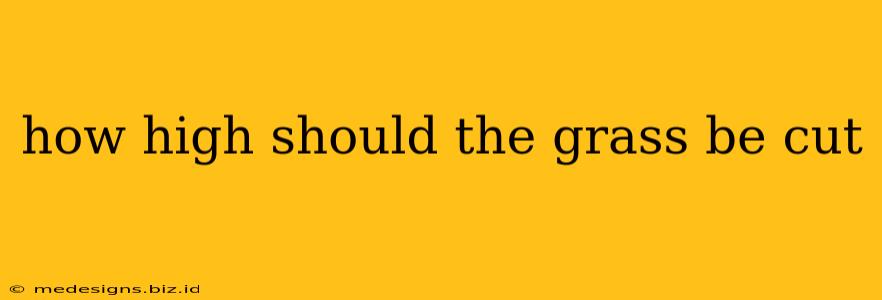Maintaining a healthy, beautiful lawn involves more than just mowing. One crucial factor often overlooked is grass cutting height. Cutting your grass too short or too long can lead to a variety of problems, from weed infestations to lawn diseases. This guide will help you determine the optimal mowing height for your lawn type and climate.
Understanding the Importance of Mowing Height
The height of your grass blades significantly impacts its health and appearance. Cutting too short weakens the grass, making it more vulnerable to:
- Weed invasion: Shorter grass leaves less space for grass blades to compete with weeds.
- Disease and pest infestation: Stress from short mowing can make grass susceptible to disease.
- Soil erosion: Bare patches are more prone to erosion, especially on slopes.
- Sun Scald: The sun can scorch exposed soil and grass crowns.
- Uneven growth: Inconsistent cutting heights lead to an uneven and patchy lawn.
Conversely, letting your grass grow too long can create its own set of problems:
- Shading out grass: Long grass prevents sunlight from reaching lower blades, causing them to weaken and die.
- Increased thatch buildup: Too much uncut grass material leads to a dense layer of thatch, which suffocates the grass.
- Attracting pests: Taller grass can provide a habitat for pests and insects.
Determining the Ideal Mowing Height for Your Lawn
The ideal mowing height depends on several factors:
-
Grass type: Different grass types have different growth habits and optimal heights.
- Cool-season grasses (fescue, ryegrass, bluegrass): Generally thrive at a height of 2 to 3 inches.
- Warm-season grasses (Bermuda, zoysia, St. Augustine): Prefer a slightly shorter cut, typically 1 to 2 inches.
-
Climate: Hot, dry climates often benefit from slightly taller grass to retain moisture. Conversely, cooler, wetter areas might tolerate shorter cuts.
-
Mowing frequency: More frequent mowing allows for shorter cuts without stressing the grass. If you mow less frequently, keep the grass a bit taller.
The 1/3 Rule: A Key to Success
A fundamental principle of lawn care is the 1/3 rule. Never remove more than one-third of the grass blade's height in a single mowing. This prevents shock and allows the grass to recover quickly.
Choosing the Right Mower and Settings
The type of mower you use can influence the final height of your grass. Rotary mowers, reel mowers, and robotic mowers all offer different cutting heights. Make sure to consult your mower's manual to understand its height adjustment settings.
Many mowers have adjustable height settings, usually expressed in inches or centimeters. Experiment with different settings to find what works best for your lawn and grass type.
Maintaining Consistent Mowing Height
Consistency is key. Regular mowing at the appropriate height keeps your lawn healthy and looking its best. Aim to mow your lawn frequently enough to follow the 1/3 rule. Consider using a mowing schedule or a lawn care app to remind yourself when it’s time to mow.
Conclusion: A Healthy Lawn Starts with the Right Cut
By understanding the importance of mowing height and following the guidelines outlined above, you can significantly improve the health, appearance, and resilience of your lawn. Remember, the ideal cutting height is not a one-size-fits-all answer, but rather a balance between various factors specific to your lawn and its environment. Pay attention to your grass and adjust your mowing practices accordingly for the best results!
